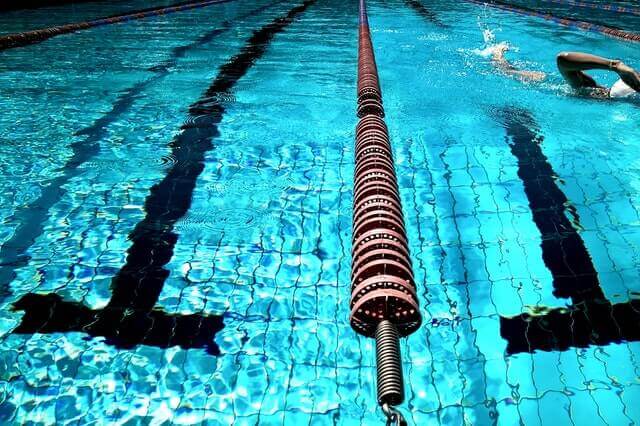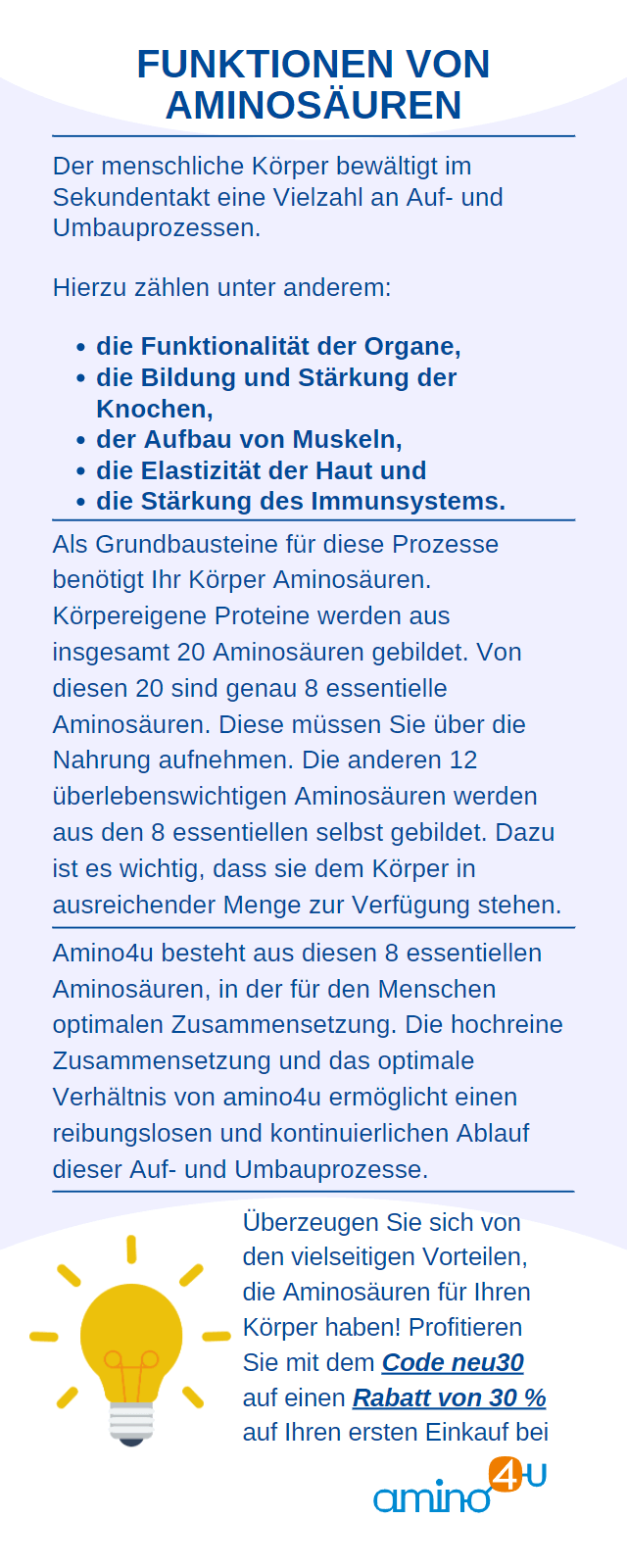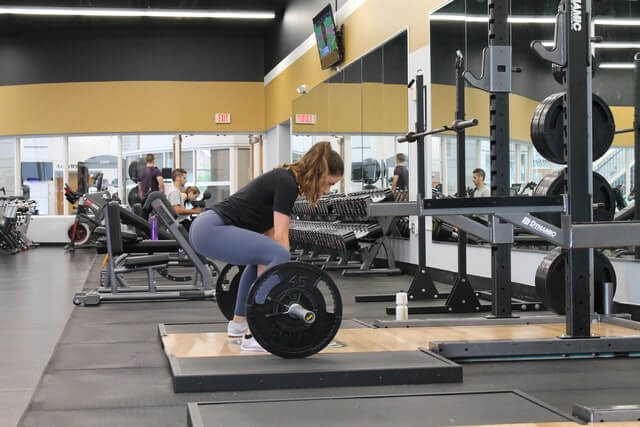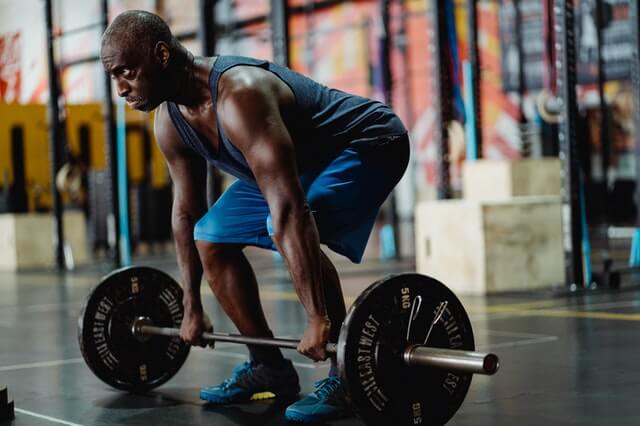We humans may not have been born for water. With the right technique and strength training for swimmers, we don't have to hide from some of the water creatures. Many people who want to improve in the water assume that professional swimmers only train in cool water. In fact, muscle training on land takes up a large part of the training plan.
No matter whether you are training for a triathlon, want to prove yourself in swimming competitions or have to take a test with a swimming element. A targeted training plan for building muscle is the secret to relaxed and fast movement in the water. With our tips you can make progress faster.
Strength training for swimmers and triathletes
If you want to move quickly and effortlessly in the water, you need clean technology. They reduce water resistance when pulling the arm and kicking the leg and save energy. The best swimming technique is of little use if there is a lack of strength and endurance .
The same applies to maintaining the optimal water position. This saves energy as the distance increases and thus ensures faster times. Just like pure strength for moving forward, you can optimize your position in the water with strength training without equipment .
Ideally, the training plan for building muscle covers both muscle growth (hypertrophy) as well as speed strength and strength endurance. You can achieve this training effect by choosing the right repetition range.
Training areas for strength training for swimmers
Do you know the saying “ form follows function ”? When it comes to our muscles, this means that their performance adapts to the challenges they face. If you train for muscle growth , you shouldn't be surprised if your muscles burn after a short time in the pool.
Conversely, someone with excellent strength endurance will not achieve good times in the 50-meter sprint in the pool. For this reason, anyone who wants to improve in the water should pay attention to a balanced training composition.
-
Maximum strength : Maximum strength training is about primarily targeting the fast-twitch muscle fibers (FT fibers). These are responsible for developing a lot of strength in as short a time as possible. In practice, you perform such exercises in a rep range of 1 to 4 reps per set. Choose the weight so that you can achieve a maximum of exactly this number of repetitions.
-
Special case of speed strength : Speed strength training is similar to maximum strength training. The difference lies in a lighter training weight and an explosive execution of the exercise in the concentric phase. Using the example of a squat, this means that you slowly squat down with the weight and then explosively straighten up from there.
-
Hypertrophy training : Hypertrophy training is the basis for fast times when training muscles for swimming. After all, this is about building muscles. A training range of 8 to 12 repetitions is ideal. Choose the weight or load so that you can do a maximum of 12 repetitions in each set.
- Strength endurance : If you want to achieve fast times, especially over medium and long distances, you need strong strength endurance. This can be optimally trained with appropriate weight in a repetition range of 20 to 25 repetitions. Part of the adaptation process here is lactate tolerance and raising the anaerobic threshold. In short: your muscles don't start to burn as quickly when training in water.

Training periodization - strength, hypertrophy, strength endurance
The same applies to the optimal training plan for water sports enthusiasts as to strength training for cycling or strength training for runners : training must take place in all three stress areas. You can exploit your best time potential in the pool or open water, for example to squeeze out the last seconds for the Ironman qualification.
In sports science , experts speak of what is known as periodization . Here, training sessions in the specific stress areas alternate in a fixed cycle. The result is a gradual improvement in performance without neglecting any area.
Starting from daily undulating periodization through linear periodization to block periodization. The most sensible and easiest to implement is block periodization.
You can use the following scheme for your training:
-
Week 1 - 4 : Strength endurance training in the repetition range of 20-25 repetitions. Three sets are planned per exercise.
-
Week 5 - 8 : Hypertrophy training in the rep range of 8-12 repetitions. Here you also perform 3 sets per exercise.
- Weeks 9 - 12 : Maximum strength training in the repetition range of 1-4 repetitions per set and three sets per exercise.
Once you have gone through the entire cycle once, it starts again from the beginning.
Important : Every training session (including muscle training for swimming) includes a warm-up program. This initially consists of a global warm-up of around 10 minutes on a cardio machine.
The following are suitable for this:
- the treadmill
- the ergometer or
- a rowing machine.
Then warm up the target muscles with a set of light weights before each exercise. In order not to tire the muscles in advance, the weight should be significantly lower than their training weight. This step serves both to achieve optimal performance in training and to prevent injuries.

Muscle training and strength training for swimmers: at home and in the studio
Many amateur athletes ask themselves whether muscle building or muscle training can only be carried out in a studio. Of course, the gym offers a wider range of machines and equipment for training. If you have space at home, you can get everything you need for additional strengthening training with a small budget.
For this reason, in the practical part of our guide we focus on exercises that you can do at home with little effort. This applies to both exercises with free weights and exercises with your own body weight (bodyweight exercises). Both types of exercises have the advantage that they train small auxiliary muscles.
In addition, you promote body stability through the stabilization work that the body has to do. This in turn is optimal for a stable position in the water. Often it is not a lack of strength to move forward, but rather a lack of body tension for an optimal position in the water .

Which muscles do I need to train as a swimmer?
We can actually make it short here. Swimming is a whole-body sport. Since every chain is only as strong as its weakest link, every muscle has to be trained to achieve the best times. This especially applies to the shoulders, arms and back . These muscle groups are constantly engaged in diving, sliding, pulling, pushing and retrieving movements in almost every swimming style.
But the legs also have to do a lot of work and enable energy-saving swimming. Don't forget the chest, abdominal and intercostal muscles. These not only help with propulsion and stabilization. A strong core is also crucial for powerful breathing underwater .
These are the best muscle exercises for swimmers & triathletes
Strength training for triathlon and swimming can safely take place under the same principles. After all, the physical demands are the same. In order to make training as simple, time-saving and efficient as possible, we focus primarily on complex compound exercises.
Compound exercises are exercises that meet several conditions:
- Complex movement sequences that simultaneously train coordination.
- The inclusion of multiple joints.
- Movement sequences that train several muscle groups in their interaction.
- Exercises that offer the opportunity to use both a little and a lot of weight.
This principle allows you to kill several birds with one stone during training. By involving multiple muscle groups and joints in each exercise, you train inter- and intramuscular coordination . This benefits you when it comes to developing your performance in the water. You also save a lot of training time because you train several muscles in one go.
Tip : Classic equipment training from the gym is not specific enough for your training goal. Butterfly training, for example, isolates the chest, but leaves out the shoulders, triceps and auxiliary muscles . The barbell bench press, on the other hand, covers all of this.
What equipment do I need?
Our training for swimming athletes can be implemented both in the gym and at home. If you don't train in a studio, you only need a small amount of equipment.
In addition to your own body weight, these are the following things:
- Stable flat bench
- Adjustable barbell rack
- Barbell bar
- Sufficient weight plates
- Pull-up bar
Exercise 1: Squat
The squat is the king of exercises and really gets essential amino acids flowing in the muscles. When done correctly, the squat trains the thighs, buttocks, lower legs, abdominal muscles and lower back.
As a compound exercise, it trains coordination to a considerable extent and also the interaction between the torso and lower extremities. Squatting with a barbell is essential for a powerful leg kick and for a stable position in the water.
- Stand under the barbell bar so that the bar rests on your neck muscles when you lift it out.
- Take a stance that is approximately shoulder-width apart with your feet slightly rotated outwards.
- Lift the dumbbell out of the holder and slowly bend. Make sure your knees do not extend past the tops of your feet throughout the process. The entire sole of the feet remains on the floor. Keep your back straight.
- Bend until your thighs are parallel to the floor.
- Hold the position briefly and slowly return to the starting position. Do not fully bend your knees in the final position.
First practice the correct technique with a light weight . Without proper execution, the risk of injury is otherwise too high, especially with high training weights. If you want to do strength training without equipment , you can also do squats on one leg with a heavily loaded backpack.

Exercise 2: Pull-ups
Most swimmers have their wide V-back to thank for their large number of pull-ups . This exercise strengthens the entire back starting from the lats to the shoulder blade muscles. Then there are the shoulders, biceps and forearms. You can perform pull-ups in two variations.
Once with a wide overhand grip and once with a narrow underhand grip. The latter variant is significantly more biceps-heavy. Accordingly, we recommend the variant with a wide overhand grip, as this comes closer to the stress pattern when swimming.
- Grip the pull-up bar with a comb grip that is significantly wider than shoulder width. The backs of your hands are facing you.
- Get into the starting position by letting your body hang. Your arms are stretched out (not hyperextended) - your knees are bent.
- Slowly pull yourself up. The chin must be above the bar.
- Hold the position for a good second and slowly (!) return to the starting position.
Tip : If bodyweight pull-ups are too easy for you, you can make the exercise harder. Clamp weight plates between your legs , use a weight belt or vest, or wear a weighted backpack.
Exercise 3: Bench press
The shoulders and chest have to work extremely hard when moving forward in the water. The classic bench press with a barbell is the perfect exercise to create the muscular foundation. As with squats, the same applies here : Be sure to practice the clean technique with a light weight so as not to injure yourself.
- Lie on the weight bench so that the bar is approximately at eye level. The feet are bent and firmly planted on the floor.
- Grip the bar shoulder-width apart and pull your shoulder blades together as if you wanted to crack a nut between them.
- Lift the dumbbell out of the holder and slowly lower it towards your chest. Important: Lower the weight in a slight arc to follow the shoulder's natural movement.
- The target point when lowering the dumbbell is the lower end of the sternum below the nipples.
- Hold the position briefly and then press the weight back to the starting position. Please do not push your elbows straight.
Alternatives : Alternative exercises without equipment include push-ups and dips with your own body weight or with additional weight.
Exercise 4: Barbell row
Barbell rowing also aims to build a strong back. This serves both the water position and the propulsion. Unlike the pull-up, the focus here is less on the “ width ” and more on the “ depth ” of the back. At the same time, the bent-over posture strengthens the lower back . Here too, all you need is a barbell and a rack.
- Grip the barbell with an overhand grip slightly wider than shoulder width and lift it out of the holder with your back tense.
- Take two steps back and take a hip-width stance.
- Bend your upper body forward and arch your back slightly. This remains intact throughout the entire movement sequence.
- Now slowly pull the barbell bar towards your belly button. Make sure that you bring your elbows as close to your upper body as possible.
- At the end, hold the position briefly and slowly lower the weight again.


Exercise 5: Forearm plank
With a strong core you're already half the battle. This exercise is a must for both strength training for runners and strength training for triathlons . It aims precisely at the torso and gives you the necessary torso stability both in the water and on land. Accordingly, the “ plank ” should not be missing from any training plan for building muscle .
- Get on all fours and support yourself on the floor with your forearms. Your elbows are below your shoulders.
- Extend your legs backwards. Your body forms a straight line like a board from your heels to your head. Hold this position throughout the entire exercise.
- Hold this position as long as you can.
- Then take a break and continue with the next sentence.
The beauty of this exercise is that you can vary it as you see fit. Challenge yourself by holding the position for several minutes. Alternatively, alternately lifting one leg or one arm at a time.
Conclusion: strength training for swimmers
Of course, the five exercises presented are not the be-all and end-all when it comes to strength training for runners, swimmers and triathletes. They form an excellent basis for a balanced training. As you can see, strength training can be done at home without equipment and doesn't require much effort.
This makes it possible for every swimming athlete to improve quickly and efficiently through muscle training. At the end, however, we don't want to leave you with one hint: In order to get the most out of your training, a balanced and protein-rich diet is mandatory.
Only if your body has enough amino acids available can it build the necessary muscles, because every gram of muscle protein consists of amino acids . But you will see that neither strength training for swimmers nor sports-appropriate nutrition is rocket science.




